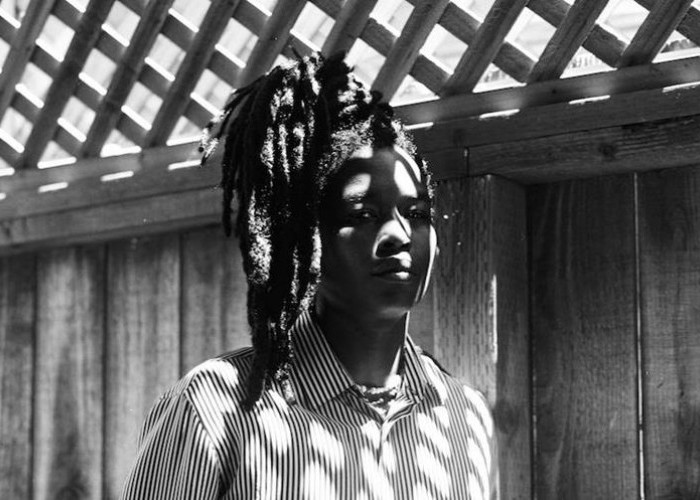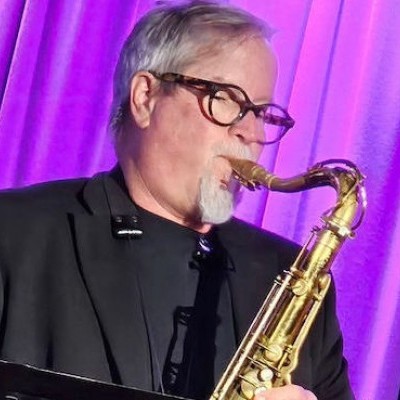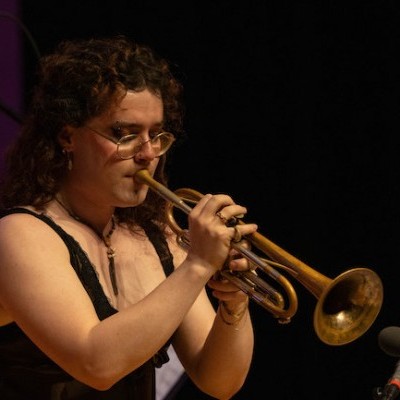Oct 28, 2025 10:47 AM
In Memoriam: Jack DeJohnette, 1942–2025
Jack DeJohnette, a bold and resourceful drummer and NEA Jazz Master who forged a unique vocabulary on the kit over his…

“Roscoe Mitchell, Don Moye, Jason Moran, Amina Claudine Myers, Thomas Stanley, Nicole Mitchell — these people hugged me,” Moor Mother says.
(Photo: Samantha Isasian)At the 42nd annual Festival International de Jazz de Montréal, Moor Mother gave one of her most soul rattling performances. As part of drummer and composer Terri Lyne Carrington’s Invitation Series, Moor Mother reimagined Frederick Douglass’ famous 1852 speech, “What To The Slave Is The Fourth Of July?,” by incorporating ritualistic small percussion and heavy electronic voice filters while Carrington underscored her oration with ferocious drum improvisation.
The séance-like performance was all the more spectacular given that it occurred on July 4, a day that gun violence had yet again ravished the U.S. And, more significantly, it was the first time Moor Mother had played with Carrington. The two had brief email exchanges, but no set plan. Yet it resulted in a collaborative improvisation of the highest order.
When asked when she decided to make Douglass’ speech into her own and how much time she needed to prepare, Moor Mother succinctly responded, “This is just the work that I do.”
She explained how she contextualized Douglass’ address to the United States in Canada’s history. “I was thinking of the broader context of Canada actually being [a part] of North America and how these [country] borders take place,” Moor Mother said. “It’s all based on different wars and coups.”
Even with Moor Mother’s scintillating recitation, she does not consider herself a spoken word artist. “I’m not so much into spoken word. But I’m really into poetry,” she said, before citing Maya Angelou, Sonia Sanchez, Ntozake Shange, Gloria Naylor, Lucille Clifton, Amira Baraka and Henry Dumas as her favorites. She also mentioned Saul Williams, whose 1988 film Slam, she said, taught her how to write poetry faster.
Poetry is just a sliver of Moor Mother’s artistry. She’s a polymath. In addition to playing guitar and sound sculpting, she’s a performance artist, photographer, college professor, socio-cultural activist and Afrofuturist philosopher.
Before she became Moor Mother, she was known as Camae Defstar as part of a Philadelphia-based punk band the Mighty Paradocs. She and one of her artistic co-conspirators, Rebecca Focus, also spearheaded the live music series Rockers! in 2007 that lasted some 15 years. As Defstar, she started making electronic avant-hip-hop beats, inspired, in part, by the late producer J Dilla. But her burgeoning beat-making hadn’t emerged on stage. During this period, she did create a solo project in 2015, Moor Mother Goddess, which gave birth to her nom de plume.
She started performing as a solo artist, releasing solo EPs such as Fetish Bones (2016) and The Motionless Present (2017). She complemented her albums with a self-published magazine of her poetry. On her latest album, Jazz Codes (Anti- Records), she pays homage to some of her jazz lodestars and mentors such as Mary Lou Williams, Woody Shaw, Billie Holiday, Joe McPhee and Amina Claudine Myers.
Jazz Codes features contributions from pianist Jason Moran, flutist Nicole Mitchell, singer and fellow sound sculptor Melanie Charles and poet, sound artist and educator Thomas Stanley. She also recruits help from the critically acclaimed free-jazz ensemble Irreversible Entanglements, of which she’s a member.
With its evocative usage of electronic textures, searching acoustic jazz accompaniments and transportive sonic pull, Jazz Codes highlights Moor Mother’s penetrating connection to the jazz lineage.
“When I first came onto this [jazz] scene, I didn’t know who was going to take me under their wings,” Moor Mother said. “A co-signage is really important for a musician to get any real success based at the DIY level. It was always these elder legendary jazz cats who co-signed me. So, I wanted to give a little gift back to them. Roscoe Mitchell, Don Moye, Jason Moran, Amina Claudine Myers, Thomas Stanley, Nicole Mitchell — these people hugged me. That meant a lot to me. I just wanted to give a little sweetness before I get back to this historical liberation work.”
That historical liberation work includes her ongoing efforts with the Black Quantum Futurism, a collective she launched with Rasheedah Phillips. The group explores, interrogates and deconstructs such heady topics as African philosophies and rituals, quantum physics and temporalities. “We released the book Community Futurisms, which deals with how we approach time and deal with housing and communities. We built grandmother clocks. We break down these linear aspects of time. We show how Greenwich Mean Time is oppressive in marginalized communities.”
Moor Mother is preparing to release her next album, The Great Bailout. “It’s a historical document,” she explained. “With The Great Bailout, I’m ready to gain new fans and lose some. I’m ready to do it all.” DB

Jack DeJohnette boasted a musical resume that was as long as it was fearsome.
Oct 28, 2025 10:47 AM
Jack DeJohnette, a bold and resourceful drummer and NEA Jazz Master who forged a unique vocabulary on the kit over his…

“I’ve told students, ‘I don’t mind if you use AI for this or that project,’” says MIT’s Pascal Le Boeuf. “‘But you need to tell me.’”
Sep 18, 2025 11:14 AM
A standard joke when it comes to discussing artificial intelligence, or AI, is that it’s developing so rapidly that…

Chuck Manning Works for NASA … and plays jazz.
Sep 18, 2025 11:23 AM
Congratulations! After years of study, you’ve earned your degree in jazz performance. But let’s face it: Making a…

Always a sharp dresser, Farnsworth wears a pocket square given to him by trumpeter Art Farmer. “You need to look good if you want to hang around me,” Farmer told him.
Sep 23, 2025 11:12 AM
When he was 12 years old, the hard-swinging veteran drummer Joe Farnsworth had a fateful encounter with his idol Max…

“Make time and energy to meet people and make friends,” suggests Millie Ahearn, a student at DePaul University.
Sep 18, 2025 11:32 AM
For many students, the transition into a collegiate jazz program can feel overwhelming — new peers, unfamiliar…